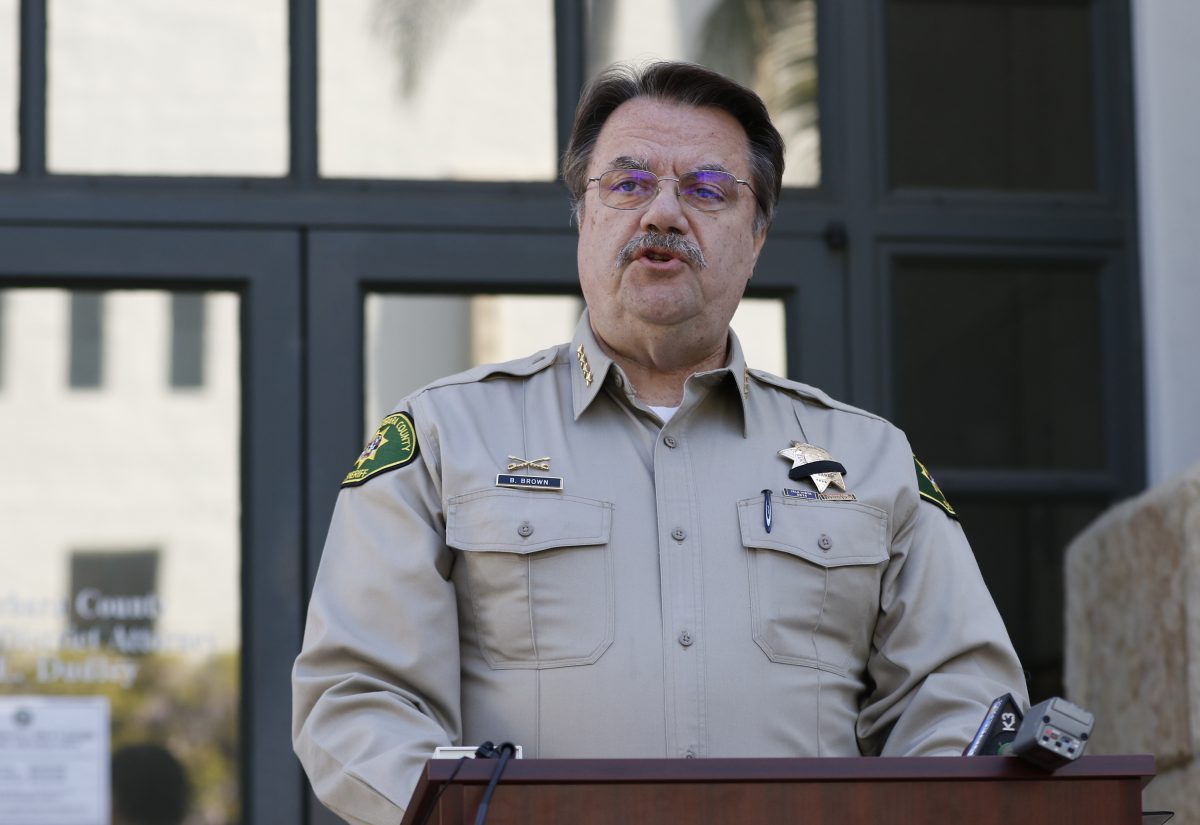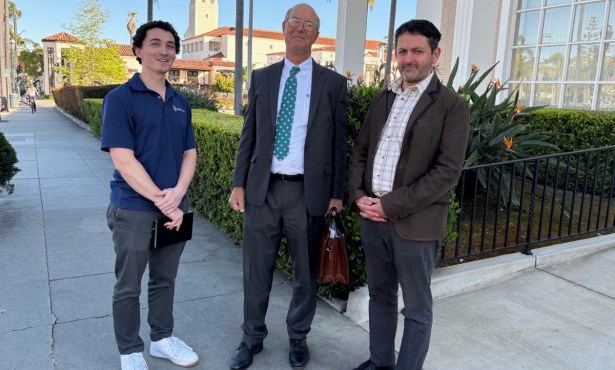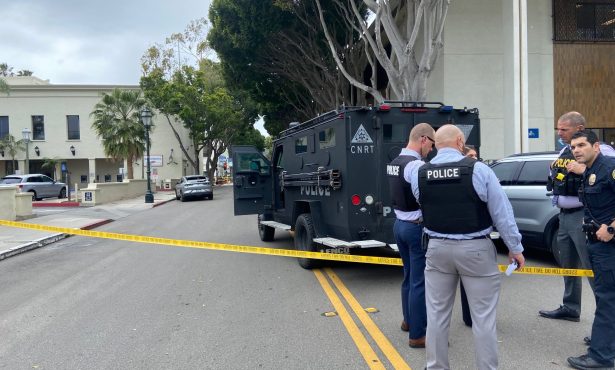Budget Battles: How Much Is Too Much at the Santa Barbara County Jail?
Sheriff Charges Supes Are Defunding the Police by Wanting More Diversion Programs

Push came to protracted shove this Tuesday afternoon between Sheriff Bill Brown and the county supervisors over the number of inmates that should be locked up in the County Jail — now at a record historic low — and how the supervisors, who control the purse strings of county government, might split any savings accrued because of an anticipated drop in mandatory overtime costs by custodial officers.
By the meeting’s end, the two sides seemed further apart than when they started. Sheriff Brown — backed up by testimony from four police chiefs — accused at least two supervisors of trying to “defund the police” with what he called ill-thought-out proposals: “This is a reckless act you’ve proposed … that could force some choices that are pretty ugly.”
In turn, supervisors Gregg Hart and Das Williams accused Brown of using “intentionally provocative” language that seriously distorted their ideas. This year, the proposed Sheriff’s Office and jail budget is $177 million, Williams noted. Last year, it was $169.5 million. “When the budget goes up,” he stated, “that’s not a cut.”
Though both sides were bruised by the exchange, both could also claim victory. Brown, for example, had successfully rebuffed a motion — pushed most ardently by Supervisor Williams — to use half of the $4 million in projected savings from jail overtime costs and spend it on programs designed to keep offenders out of jail in the first place.
On the flip side, all five supervisors expressed frustration with the jail’s pre-COVID status quo — when its population hovered at about 1,000, in often overcrowded conditions. Accordingly, the board unanimously endorsed three milder measures designed to prod Brown toward making changes. Supervisor Hart urged him to take advantage of a “once in a generation” opportunity to change the way jail operations were handled.
On the table ostensibly was what Brown described as “a rolling housing reduction plan,” a complex set of charts and graphs that highlighted how various savings could be achieved in overtime costs by shutting down various wings of the South County jail, depending on the number of inmates.
Supervisor Hart objected that the sheriff’s staff presentation was not only hard for members of the public to follow, but it also failed to include the dramatic extent jail populations had dropped since COVID. Last Friday, 580 people were incarcerated, Hart noted. Of those, he said, 80 were soon to be transferred to state prison. By contrast, the most recent numbers in this sheriff’s report dated back to 2019, when the jail census hovered at 903.
“That tells a completely different story than what we were doing last year,” Hart objected. Even with the jail population so low, Hart argued, public safety has not been compromised. In fact, he argued that high jail populations were bad for public safety because they lead to “more recidivism, more crime, and more crime victims.” Making matters worse, he stated, was the overrepresentation of Black and Latino people in the County Jail, not to mention those people financially unable to make bail or those with mental illnesses.
Brown countered that the county’s current jail population was “artificially low” and would certainly bounce back. When the criminal court system resumes its more normal pace as the COVID curtain lifts, he predicted, the number of people sentenced to County Jail would increase.
Likewise, when the new North County jail finally opens — perhaps late this year — North County law enforcement agencies will no longer need to “lose” deputies for the three to four hours it takes to transport accused offenders to the South County jail and book them. For example, in Guadalupe, nighttime bookings leave the city with only one law enforcement officer on duty.
More than that, Brown insisted, violent crime was on the rise. In the first five months of 2021, Brown noted, there have been 15 homicides countywide. In all 12 months last year, the number was 12. Hart acknowledged these realities but offered one of his own. From 1973 to 2000, he noted, the state’s population grew by 62 percent, while the number of people behind bars increased by 600 percent.
When Williams proposed setting aside $2 million from Brown’s proposed budget for diversion programs, the sheriff adamantly resisted. Supervisors Bob Nelson and Steve Lavagnino balked, as well. Lavagnino called the proposal “BS” and “overreaching.” Supervisor Hart offered to eliminate that part from his four-part motion, but Williams insisted his colleagues extend him the “courtesy” of voting him down.
This put Supervisor Joan Hartmann — notably quiet during this exchange — on the hot seat. Hartmann has long expressed concern at the high cost of incarceration — both in dollars and cents and in human lives. She is waiting for a long-pending consultant’s report on the Sheriff’s Office and a report from a retired judge recently hired by the County Administrator to review the workings of the county’s criminal justice infrastructure before deciding on how to vote on this year’s budget.
Yesterday, however, she cast her vote against Williams’s motion, which was defeated by a vote of 3-2. The supervisors will revisit the issue again next week when reviewing the first reading of the county’s proposed new budget.
CORRECTION: This story was updated to clarify which 27-year period of population growth Gregg Hart was referencing, and to indicate it is 15 homicides that occurred countywide this year, not 12, and 12 in all of 2020, not 15.
Support the Santa Barbara Independent through a long-term or a single contribution.



